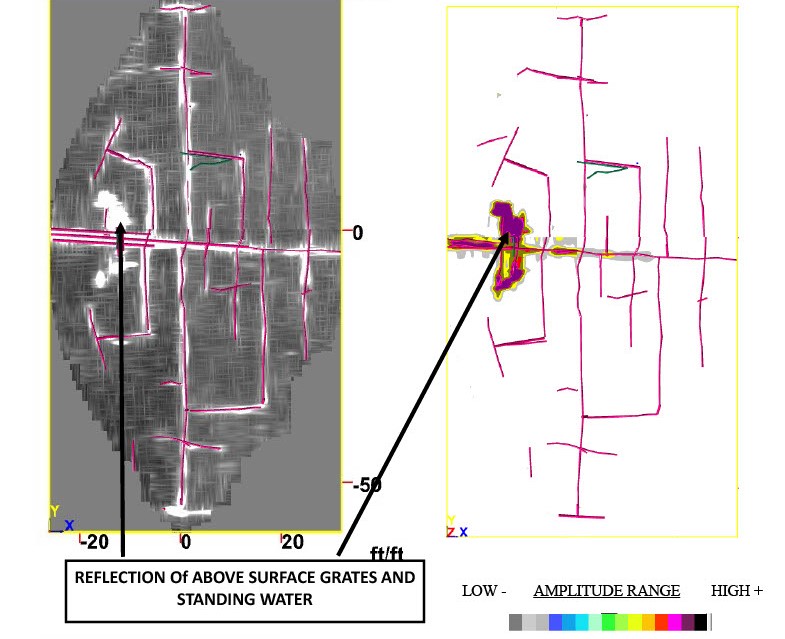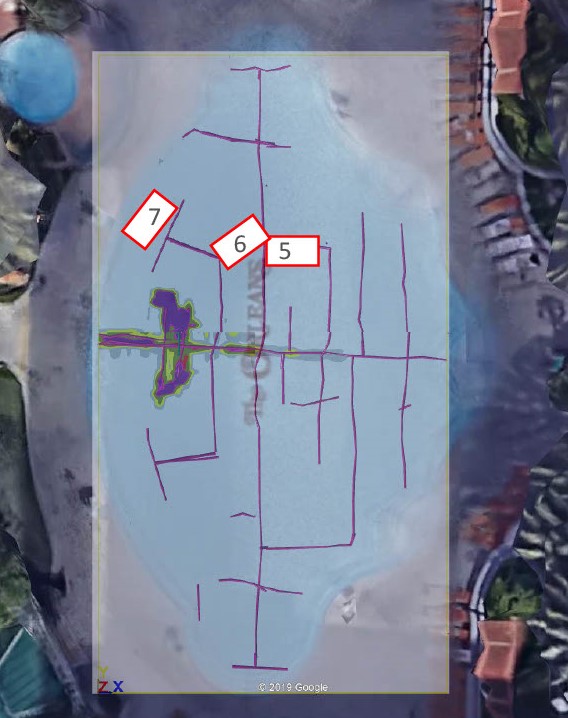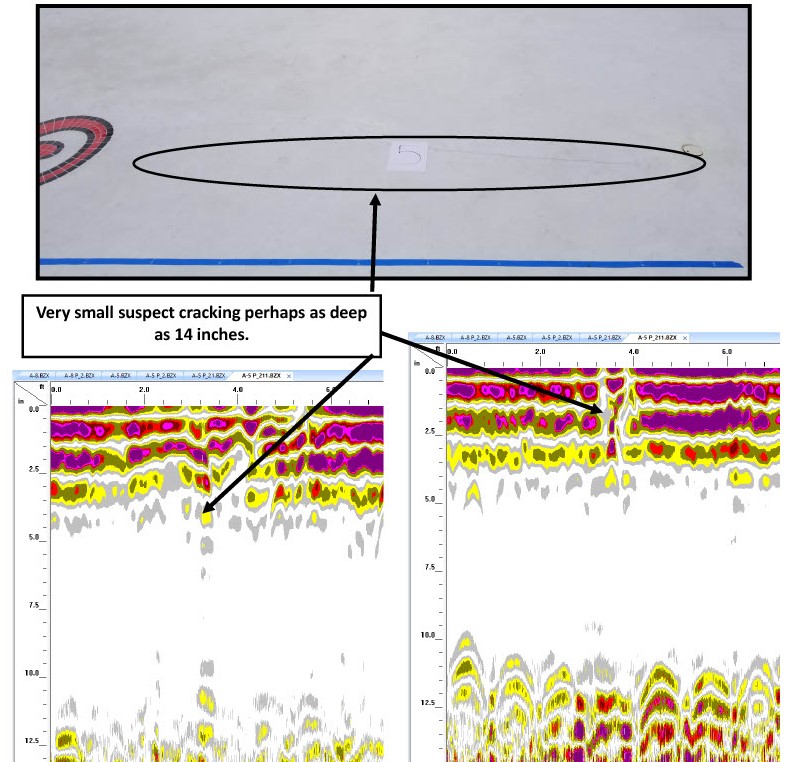In Las Vegas, we never know what kind of GPR project we’ll be working on next. In the past, we’ve had many types of GPR projects within different industries. From the Westgate Resort and Casino to the Bunker Memory Garden, we keep meeting new challenges. Some projects call for mapping rebar and conduit, while others need cracks and potential leaks to be examined. Regardless of the Las Vegas GPR imaging project, we tailor our GPR and GMPR tools to the project scope and deliver helpful reports backed by GPR data.
Defining the Project Purpose
Many Las Vegas clients come to us with a clear intent on what they want to achieve with GPR. Some past project objectives in the Las Vegas area have been to identify the extent of cracking depth in a pool, identify potential voiding or porous soils beneath a concrete slab, and to analyze subsurface utilities for potential leaks. Because GPR technologies are non-destructive, they are ideal for analyzing structures that are already built. We have analyzed and provided as-built documentation for parking structure footings of the Las Vegas Expo Center and the subsurface utilities of Meow Wolf.
Outlining the Scope of Work
Determining the project objective is the first step for any Las Vegas GPR imaging project. The second step is defining what work we need to do to satisfy those objectives. We have many different tools and methodologies at our disposal. Some GPR imaging tools are better suited for gathering data over a large area of concrete, while others are better for investigating smaller regions like cracks.
Dividing the Project into Phases
We typically split projects into phases to provide a quick turnaround of data. Our first phase usually involves collecting data onsite. Once we have collected all the data we need, we’ll send it to our office for 3D GPR data processing and high-resolution imaging. Depending on the images we process, we’ll gather more data in the field. In the final phase, we’ll create a full report with high-resolution imaging and detailed findings that provide useful recommendations to our Las Vegas clients.
Onsite Data Collection
One of the first steps to collect data on site is to set up gridding in the area under investigation. Once the grid is set up, we methodically collect data to cover every square foot of the area. This is also where we select the best GPR tool for the job. 400MHz GPMR (3D Ground Penetrating Microwave Radar) antennae are ideal for mapping voids and identifying moisture-dense and unorganized soils that are subject to water leaks.
After we collect data over the whole area, we can conduct more concentrated scans to investigate potential cracks, leaks, or other spots of concern. Often, we will use a different tool for these investigations, such as a 1600 MHz GPMR antenna. This more sensitive antenna is ideal for imaging small irregularities in concrete such as cracks, voids, delaminations, and other subtleties.

3D data of The Orleans pool. Image on left is raw unprocessed 3D data with conduits plotted. No voids detected. Image on right is post processed 3D data with rebar and wire mesh removed. Utilities and conduits are plotted and no large cracks or voids were detected.
Examining the Data
Once all data is collected, we move into the post-processing phase. We upload all data into state-of-the-art post-processing software for 2D and 3D high-resolution imaging. For Las Vegas GPR imaging projects, we’ll take into account the region’s soil properties. We do this by creating a logarithmic processing code based on local subsurface geologic conditions and soil conductivity properties. The code is designed to filter and clean GPMR data to produce the clearest images possible to depict fill soil characteristics, voiding, and subsurface conditions.

Post processed 3D GPR image of The Orleans pool in Las Vegas. Lines indicate conduits and red boxes are areas where concentrated crack imaging was applied.
Reporting Findings of Las Vegas GPR Imaging Projects
In the last phase of the project, we’ll create and deliver a highly detailed report of our findings to satisfy the original project objective. Our findings may reveal that there is no evidence of cracking, voiding, or delamination. In other cases, our data will reveal unexpected voids and deep cracks. Using 3D imaging, we can also pinpoint areas where the soil is highly saturated and unorganized.
Scanning and Reporting Cracks
For projects, such as The Orleans pool Survey, where clients want to locate cracks or potential leaks, we provide high-quality images of these areas and a report of the depth and specific locations of these areas. When the location of the cracks isn’t known prior, we scan the entire region for visible cracks, label and identify suspect cracks, and then measure the depth of the crack using our data. By analyzing the data, we predict whether cracks are penetrating through a concrete slab and if they should be a concern for the client.

Concentrated 2D data of crack #5, labeled in previous image. Data revealed that there was very small suspect cracking, perhaps as deep as 14 inches.
Identifying Limitations
We’re always aware of the limitations of what we can accomplish in the field. All projects are unique and pose certain constraints for the data we can collect. These limitations come from the way structures are built and whether there are materials, such as rebar and embedded metallic mesh or plates, within the concrete. These materials may prevent GPMR from penetrating the concrete at a certain depth.
Providing Suggestions to Client
For Las Vegas GPR imaging projects, we can provide analytical interpretations and recommendations for our clients based on the data we gather onsite. In the case of surveying The Orleans pool, we suggested continued monitoring of the pool for water loss. If the water loss increased, we would conclude that one or multiple cracks may be increasing in size or that there might be a utility leak. We then provide avenues for additional support, such as a follow-up examination of suspect cracks or leak detection services.
Las Vegas GPR and GMPR Projects With GPR Data
While we serve clients across the country, we have completed many projects focused on the Las Vegas area. We are familiar with the soil conditions throughout the Las Vegas region and can provide high-quality imaging and reports to inform construction efforts and to use as reference years down the road. Request a quote through our website or give our Las Vegas office a call at 702-240-3046 to get started.

